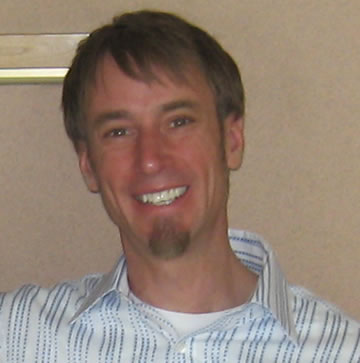About the topic
Bio
Get the Flyer
About the topic
Realization of hydrogen and fuel cell technologies as a carbon-free, renewable energy alternative requires developing scalable H2 production systems. One approach for renewable H2 production is to capture the energy of the solar spectrum and convert water or electricity into H2. For this process to occur on relevant timescales requires progress in synthesizing inexpensive catalysts that couple multi-electron transfer to proton reduction and H2 generation. Ideally the catalyst and photocatalytic system will have high turnover and lifetimes, and be composed of abundant elements to be economical on large scales. Research efforts in our group are attempting to address this challenge by developing photobiological and artificial H2 production systems. Some microorganisms have a unique ability, under specialized conditions, to couple photosynthetic water oxidation to H2 production. A constraint to sustained H2 production in these organisms is the sensitivity of the catalytic process to O2, a by-product of water oxidation. We are investigating how O2 affects the function of H2 producing enzymes, hydrogenases, and more generally their regulation, biosynthesis and structure-function relationship towards engineering improved enzymes and photocatalytic systems. Being composed of a polypeptide chain and abundant first-row transition metals, hydrogenases are also potential alternatives to more conventional but costly noble metal H2 production catalysts, such as platinum, for use in artificial solar devices. This requires addressing various technical barriers to integrating hydrogenases with devices and on electrodes including their immobilization, electroactive coverage, and catalytic lifetimes. Nanomaterials are ideal for this task; their structural, electronic and charge-transfer properties are superior to bulk materials, and allow for control of device configurations over a wide-range of length scales. Our strategy is to construct nanohybrid architectures between hydrogenases and nanomaterials and learn how to control the molecular orientations, protein conformations and electronic interactions that are fundamental to efficient catalysis. A summary of recent progress in these project areas will be presented.
From a student song: First there's Scandium, Titanium, V is Vanadium, Cr - Chromium, Then Manganese, Iron, Cobalt, And Nickel, Copper, Zinc. They're the first row transition metals, And that's right - I think. They're the first row transition metals, Yes it's right, I think.
Bio
 Dr. Paul King received his B.S. and M.S. degrees from the University of Wisconsin-Madison and his Ph.D. from the University of Georgia. He is currently a Senior Scientist at the National Renewable Energy Laboratory in Golden, CO, where his research focuses on basic and applied studies of hydrogenases and hydrogen production in microbial systems. Dr. King is supported by funding from the DOE, Office of Basic Energy Sciences; DOE-EERE Hydrogen Fuel Cells and Infrastructure Technologies Program; and the NREL LDRD Program. Much of the research has been facilitated through the discovery and development of a recombinant expression system for the biosynthesis of [FeFe] hydrogenases, used in several labs to study hydrogenases and the maturation proteins responsible for synthesis and assembly of their unique catalytic site. The scope of his projects encompass: (i) the expression, regulation and structure-function of hydrogenases; (ii) the physiology and metabolism of hydrogen production in bacteria and green algae; and most recently (iii) hydrogenase-nanomaterial hybrids for artificial solar conversion systems. The projects involve internal and external collaborators and integrate several scientific disciplines including chemistry, materials, biochemistry, theory and microbiology. Tools used for characterization include a range of biochemical, spectroscopic and electrochemical techniques. Together the research efforts seek to develop a more fundamental understanding of how hydrogen production catalysts work, how to control their assembly and function in hybrid complexes and on electrodes, and to improve their function and the solar conversion efficiencies in photobiological systems. These support a larger objective of advancing biological and artificial solar conversion systems for renewable energy applications.
Dr. Paul King received his B.S. and M.S. degrees from the University of Wisconsin-Madison and his Ph.D. from the University of Georgia. He is currently a Senior Scientist at the National Renewable Energy Laboratory in Golden, CO, where his research focuses on basic and applied studies of hydrogenases and hydrogen production in microbial systems. Dr. King is supported by funding from the DOE, Office of Basic Energy Sciences; DOE-EERE Hydrogen Fuel Cells and Infrastructure Technologies Program; and the NREL LDRD Program. Much of the research has been facilitated through the discovery and development of a recombinant expression system for the biosynthesis of [FeFe] hydrogenases, used in several labs to study hydrogenases and the maturation proteins responsible for synthesis and assembly of their unique catalytic site. The scope of his projects encompass: (i) the expression, regulation and structure-function of hydrogenases; (ii) the physiology and metabolism of hydrogen production in bacteria and green algae; and most recently (iii) hydrogenase-nanomaterial hybrids for artificial solar conversion systems. The projects involve internal and external collaborators and integrate several scientific disciplines including chemistry, materials, biochemistry, theory and microbiology. Tools used for characterization include a range of biochemical, spectroscopic and electrochemical techniques. Together the research efforts seek to develop a more fundamental understanding of how hydrogen production catalysts work, how to control their assembly and function in hybrid complexes and on electrodes, and to improve their function and the solar conversion efficiencies in photobiological systems. These support a larger objective of advancing biological and artificial solar conversion systems for renewable energy applications.
